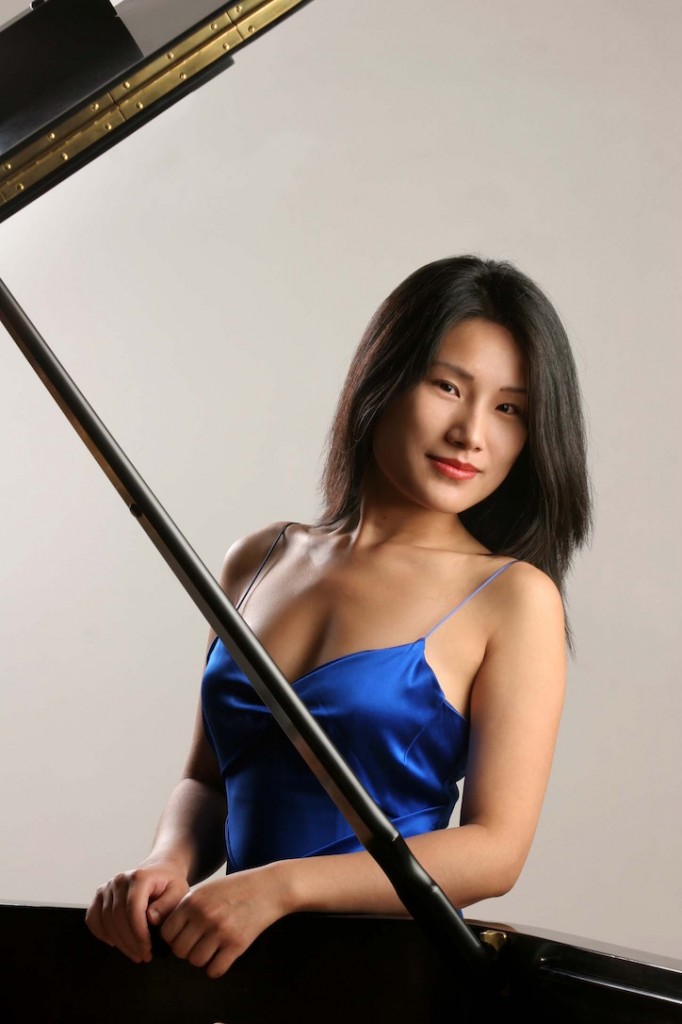Xiayin Wang puts a personal stamp on music from Haydn to Danielpour
A recital at Alice Tully Hall Monday offered a glimpse of a young pianist on her way up. Xiayin Wang, with several assists, played an eclectic program, and was not afraid to put a personal stamp on its more familiar elements.
She opened with Haydn’s Sonata No. 52, and had no qualms about digging into it. In early Classical repertoire, many pianists will try to compensate for the fact that they’re playing on an instrument two feet longer than the one for which the piece was composed. Wang made no such apology—the chords that open the first movement were massive, and she played throughout with an assertive storminess that made Haydn feel almost like Beethoven.
This bold approach cast the piece in an interesting light, but it had its downside. The voicing of the second movement was off, and she did not quite manage to settle into a true Adagio feel. In the finale she displayed tremendous technical proficiency, but her passagework, for all its cleanliness, was rushed.
Rachmaninoff’s Sonata No. 2 was a change of pace, a piece in which storminess is an accepted norm, and here Wang seemed right at home. The opening Allegro agitato was marvelous: She has an innate feel for the composer’s billowing, soaring lyricism, and is able to achieve searing, passionate playing without banging on the keys. She also has a superb variety of touch and color. In the first movement she skillfully played on the contrasts between the murkier writing and moments of blinding clarity.
The second movement has an introspective, wandering quality—Wang let it wander but each of her gestures and phrases had a sense of direction that ensured the listener never felt lost. In the finale, the problems with the Haydn finale resurfaced, as she tended to rush at the end of fast passages and not give them sufficient space to breathe. Still, Wang displayed great confidence and conviction as she wrestled with Rachmaninoff’s whirling passion, even as things started to get away from her fingers at the end.
A major draw for this program was the premiere of a new piece by the prolific Richard Danielpour. The Celestial Circus, a five-part suite for two pianos and three percussion soloists, draws inspiration from the religious traditions of five different cultures.
There is a lot of inventive and compelling material in Danielpour’s work. He explores many different qualities of sound, beginning with maddening, clockwork chimes in “Janus” that directly contrast with the skittering piano figures and furious interruptions of percussion in “Kali and Shiva.” The stately and flesh chords of “The Simurgh,” which draws on a Persian phoenix myth, gives way to an uncomfortable back-of-the-beat feel in “The Azure Dragon.” Finally, shattering percussion effects over dramatic piano trills seem to bring us back full-circle in “Archangels Michael and Lucifer.”
Much of the music occupied the same crushed and claustrophobic tonal space; the basic palette was interesting, more exploration would have been satisfying.
Still, the effects Danielpour employs are electrifying, and the three percussion soloists (Lisa Pegher, Andrew Beall, and Joseph Kelly) dispatched them with spectacular virtuosity. Precise coordination is required among the three as they pass moving figures to one another, and the xylophonist is frequently asked to double the first piano. All of this was accomplished with perfect synchronization. Wang and Raymond Wong tackled the two piano parts with confidence.
To close, Wang and Wong played the two-piano arrangement of Ravel’s La Valse. The transcription is in the composer’s own hand, but that of course doesn’t necessarily mean it works in its minimized form.
For all of the flair that the performers mustered, the vibrant and expansive color of the piece felt diluted. In its original form, the writing of this piece is dense, but it thrives on the shifting colors of the orchestra. That sort of orchestral writing, translated for two concert grands, ends up sounding like a murky morass of too much piano.
Wang’s encore was Fascinatin’ Rhythm in Earl Wild’s Gershwin-meets-Debussy arrangement, which she played with considerable élan.



